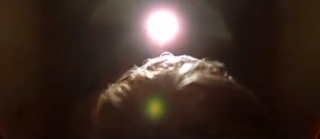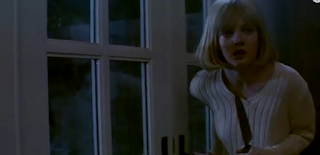The Usual Suspects is a 1995 American neo-noir crime thriller film directed by Bryan Singer and written by Christopher McQuarrie. In this post, I have analysed the opening sequence of the film to learn about the genre, narrative and characterisation.
The opening sequence of 'The Usual Suspects' enables us to learn about the genre, narrative and characterisation. The film opens with a bang. Literally, a bang from the gunshot fired at Dean Keaton, played by Gabriel Byrne, and then an explosion. The scene feels dangerous as it is dark, late at night, and the only thing that brings light to the screen is fire. These aspects suggest the crime and thriller narrative/genre. A hooded figure is seen smoking and urinating on the fire. Keaton is lying tired on the floor, he looks up at the hooded figure and says his name, "Keyser". Non-diegetic music becomes intense which tells us Keyser is of importance. Keyser's status in the hierarchy is suggested as we see him standing above Keaton and refer to him as "kid" before shooting him. This opening scene is followed by the arrest of each of the suspects, including Keaton. Therefore, the scene is something that happens in the future, however as Keaton gets arrested, we clearly know that his murder is not the crime the film may be based on.
Each of the characters have a different story arc/role in the film and we learn this within the clips of their arrest. McManus, played by Stephen Baldwin, is in bad living conditions and aggressive towards the police. This suggests he is one of the hard men and doesn't care how he acts, perhaps he has nothing to lose. Hockney, played by Kevin Pollak, gets arrested whilst working on a machine which makes loud bangs, like gunfires. He doesn't fight the police which suggests he is used to being arrested and is clever. He stays calm which he knows could get him out of trouble. Benicio del Toro, played by Fred Fenster walks with confidence and arrogance, he is good looking, suggesting he is the womaniser. Even though he is one of the hard men, he tries to run from the police, maybe his persona is all an act.
Keaton is shown most on the screen. Keaton's camera time being three times more than the other suspects may suggest his importance to the crime as well as his status in the hierarchy. His arrest is quiet and rather than being forced, he is asked to walk outside of the restaurant he is dining in. His camera time may also be a warning to the audience to pay attention to him throughout the film.
As the suspects are walking into the line-up room, the camera pans upwards on Kint, played by Kevin Spacey. The camera starts on his feet, revealing he has a disability, then panels up revealing his face. The camera also does this on Keyser, who we know is the killer, but no other character in the scene. This is perhaps extremely significant and a hidden clue that Kint is the killer and his disability is an act.






























